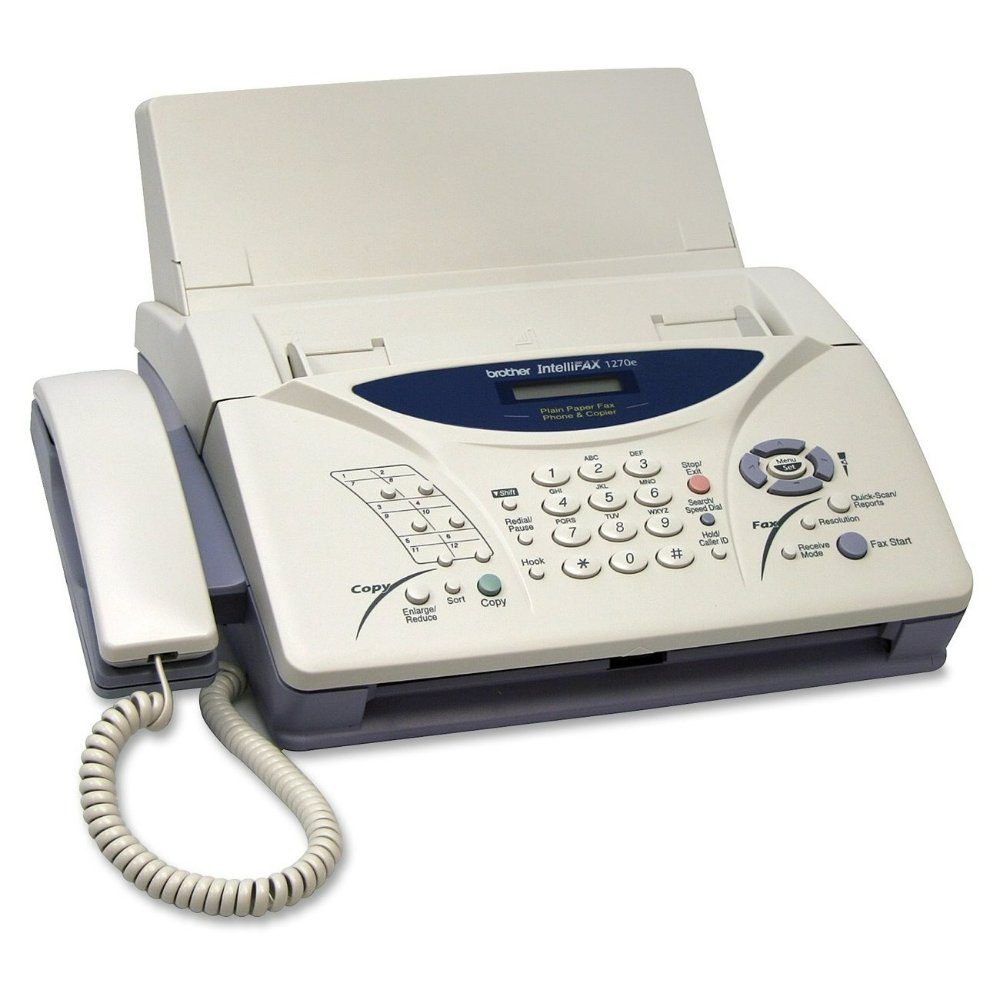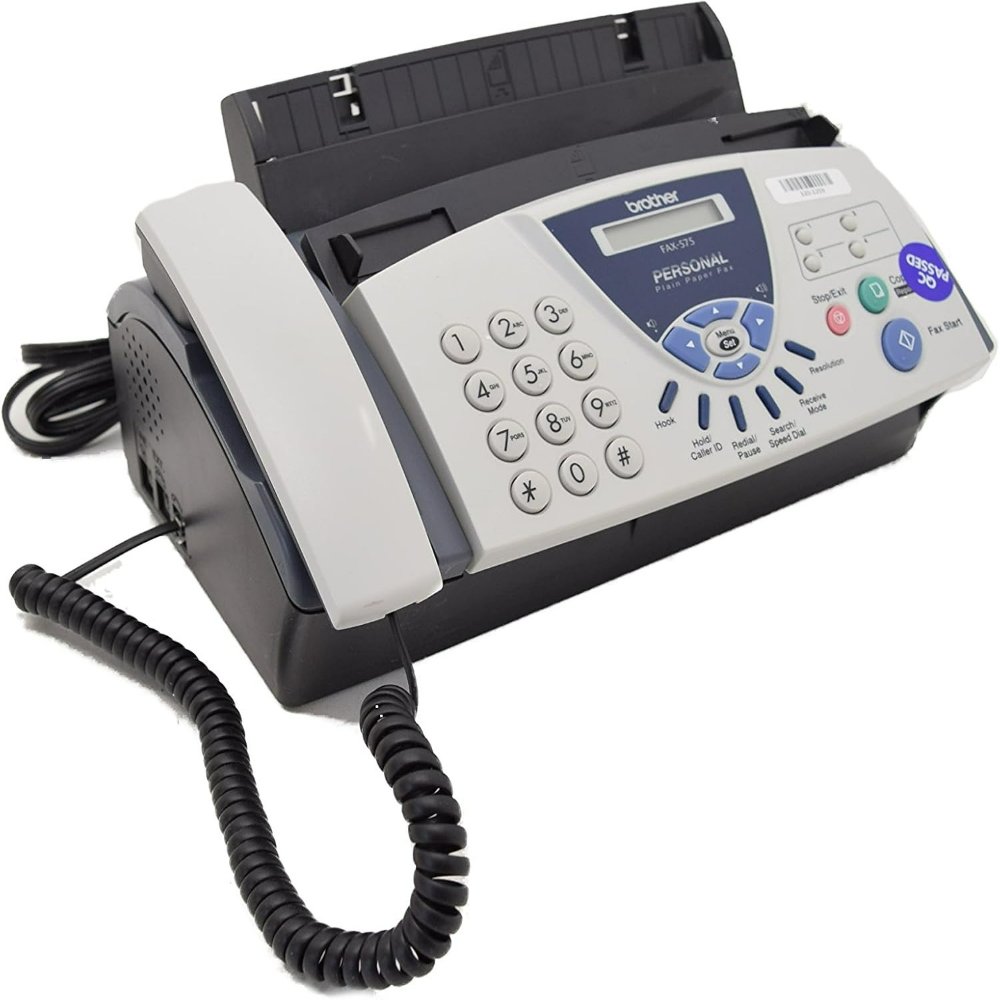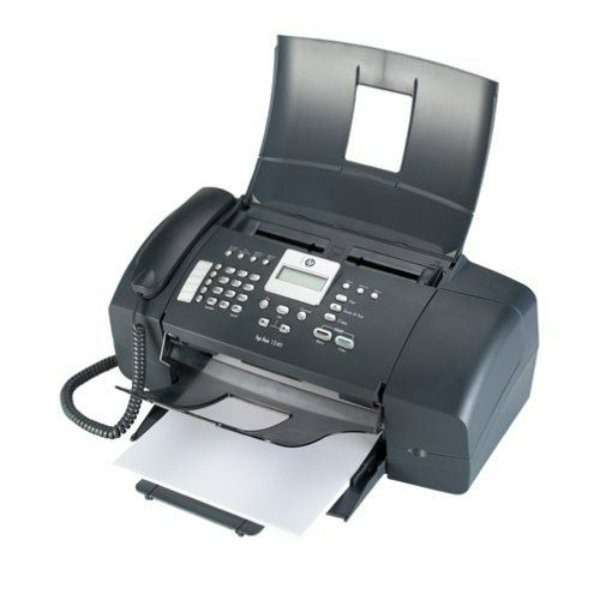The History of Fax Machines
The story of fax machines begins in the 19th century. Scottish inventor Alexander Bain received the first patent for a fax machine in 1843. This early version worked by scanning a message on a metal surface with a stylus connected to a telegraph wire. Other inventors like Elisha Gray and Samuel Morse improved Bain’s design. They made it possible to send images over wires.
By the 1970s, fax machines started to become common in offices. These machines used analogue signals to send documents across phone lines. Fast forward to the late 1980s, and fax machines had become essential. They were fast and reliable ways to send documents. The old fax machine was seen as a symbol of business communication.
Even with the surge in digital communication, fax machines have endured. They are part of the history of modern communication. This history shows a blend of innovation, adaptation, and reliability. The old fax machine is a true testament to the resilience of technology that meets people’s needs.

Why Fax Machines Are Making a Comeback
Despite the rise of email and instant messaging, the old fax machine is seeing a resurgence. This comeback may seem surprising at first. Yet, there are several reasons why businesses and individuals are revisiting this retro technology.
Firstly, fax machines offer a level of security that is harder to breach compared to digital communications. The transmission of sensitive documents through fax lines is less prone to hacking. This makes fax machines appealing for legal and healthcare sectors.
Secondly, there is a legal acceptance of faxed documents that digital formats still struggle with. Many jurisdictions recognize a faxed copy as a legally binding document. This is not always the case with emailed or scanned copies.
Thirdly, some industries have not fully transitioned to digital. They continue to rely on fax technology for daily operations. These include sectors with complex supply chains or those needing signatures on paper.
Moreover, fax machines require no internet connection. This is a plus in locations with poor internet service. Here, fax machines ensure uninterrupted communication.
Lastly, there’s an undeniable nostalgia fueling the comeback. People are drawn to the tactile nature of handling physical documents. The sound of a fax machine and the act of feeding paper can evoke a sense of simplicity and reliability.
The prevalence of old fax machines in certain industries and sectors underscores their continued relevance. It seems that, for now, the fax machine has secured its place in an increasingly digital world by filling specific niches where newer technologies fall short.
The Role of Fax Machines in Modern Business
Despite the digital revolution, old fax machines play a unique role in modern business. Their relevance ties to specific needs that fax machines meet effectively. Here are key points detailing their role:
- Security in Sensitive Transactions: Fax machines offer secure transmission. They are less likely to fall prey to cyber attacks. This is critical for businesses handling sensitive information.
- Legal Authority: Many legal systems recognize faxed documents. They hold the same weight as original papers. This legal standing makes fax machines vital for official communications.
- Industries Resistance to Change: Some sectors have not gone digital. They still rely on faxing for day-to-day tasks. These industries include legal, healthcare, and manufacturing.
- No Internet Reliance: Fax machines do not need the internet. They work well in areas with unreliable web access. This makes them reliable for constant business communication.
- Consumer Trust: People trust the fax. They know how it works and its reliability. This trust keeps the old fax machine in use in various business operations.
In conclusion, old fax machines remain a stable technology in modern business. They secure, hold legal importance, and provide reliable communication. They bridge the gap between the past and present technology, adapting to meet current business needs.

How to Integrate Old Fax Machines in Today’s Technology
Integrating old fax machines with modern technology is simple. Here’s how businesses can bridge the tech gap:
- Leverage Fax Servers: Businesses can connect fax machines to fax servers. This allows faxes to be sent and received digitally. Fax servers convert incoming faxes into emails and vice-versa.
- Use Online Fax Services: Online services offer a way to fax without the machine. They turn documents into fax formats. You can send them from computers or mobile devices.
- Employ Multifunction Printers (MFPs): MFPs combine fax, print, scan, and copy functions. They connect old fax tech to new digital systems.
- Implement Fax over IP (FoIP): FoIP sends faxes over the internet. It uses existing IP networks. This method can reduce costs linked to traditional faxing methods.
- Opt for Fax Software: Software solutions can manage faxing tasks on a computer. They provide direct desktop access to faxing functions without a physical machine.
By finding ways to merge old fax machines with new tech, businesses enhance functionality. They also maintain the security and legal standing of traditional faxing. With these tools, the old fax machine can stay relevant in the digital era.
Retro Appeal: Why Vintage Tech is Trending
The resurgence of retro technology, including old fax machines, isn’t just about functionality. It taps into a wider trend where vintage tech is gaining popularity, and here’s why:
- Nostalgia: For many, retro tech evokes fond memories of the past. It’s a form of escapism from the fast-paced digital world. The tactile sensation of using an old fax machine can trigger a wave of nostalgia for simpler times.
- Uniqueness: Vintage items offer a break from the ubiquity of modern devices. They provide a sense of individuality and style. Owning and using a retro device like an old fax machine can make a statement in a sea of smartphones and laptops.
- Durability: Older technology was often built to last. Retro tech enthusiasts appreciate the craftsmanship and ruggedness of these devices. In an age of planned obsolescence, the long-lasting nature of an old fax machine is alluring.
- Simplicity: Vintage tech tends to focus on doing one thing well, without the distractions of multitasking. This simplicity in design and function is appealing to those overwhelmed by feature-rich modern devices.
- Connectivity: In the world of vintage tech, users often form communities. They share tips, repairs, and enthusiasm for their gadgets. The communal aspect is a key part of the retro tech trend.
- Educational Value: Retro tech provides an excellent learning opportunity. It helps to understand the progression of technology. Hobbyists enjoy dismantling and reassembling devices like old fax machines to learn about their workings.
This trend’s impact is significant. It shapes how we view technology and its role in our lives. The retro appeal of vintage tech, such as the old fax machine, reflects a desire to reconnect with the past while still appreciating the conveniences of today.

The Environmental Impact of Reusing Old Fax Machines
The revival of old fax machines plays a part in environmental conservation. Here are significant ways how:
- Reduces Electronic Waste: Reusing these machines means fewer are discarded in landfills. Electronic waste is a growing concern, and extending the life of technology like the old fax machine helps mitigate that issue.
- Saves Resources: Producing new gadgets requires raw materials and energy. By keeping old fax machines in use, we conserve resources and reduce the environmental burden of manufacturing new devices.
- Lower Energy Consumption: Many old fax machines consume less power compared to some modern multi-function devices in standby mode. By using them, energy consumption can be slightly decreased.
- Encourages Repurposing: The trend of using retro tech inspires the repurposing of other old devices. This practice promotes a circular economy, where products are reused and recycled, instead of being thrown away.
However, it’s crucial to note that old fax machines might not be as energy-efficient during operation as newer technologies. Users should weigh their options and consider the total environmental footprint when choosing to reuse old fax equipment. The key is to find a balance between the benefits of extending the life of these devices and the environmental impact of their continued use.
Maintenance Tips for Old Fax Machine Users
To keep an old fax machine running smoothly, follow these maintenance tips:
- Clean Regularly: Dust and dirt can accumulate in fax machines. Clean inside and out often.
- Check Connections: Ensure phone lines and power cords are secure and undamaged.
- Replace Consumables: Ink cartridges and toner need replacing. Don’t wait until they run dry.
- Service Parts: Wear and tear affect parts like feed rollers. Service them as needed.
- Update Numbers: Keep the speed dial and contact list current to avoid delays.
- Test Regularly: Send test faxes to check for quality issues like poor line resolution.
- User Training: Educate anyone using the machine on proper handling to prevent mishaps.
By following these tips, users can ensure their old fax machine continues to function effectively.
Future Prospects: Will Fax Machines Survive the Digital Age?
In a time where digital communication dominates, the fate of the old fax machine seems uncertain. As we venture deeper into the digital age, several factors will determine if fax machines sustain their niche.
- Technological Evolution: Fax machines must evolve technologically to survive. This means they must become more energy efficient and integrate with digital platforms seamlessly.
- Security Enhancements: With cyber threats on the rise, the inherent security of fax machines is an advantage. If these machines can further bolster their security features, they could remain valuable in sensitive communications.
- Legal and Regulatory Developments: Changes in law could either favor or hinder fax machine use. If digital signatures gain more legal acceptance, the need for faxing could decrease. However, if regulations stress non-digital transmission for certain documents, fax usage could persist.
- Market Demand: Consumer preference has a massive impact. If the retro trend continues and businesses keep recognizing the practical uses of fax technology, these machines will likely retain their place.
- Environmental Considerations: With eco-consciousness rising, the ability to reuse and refurbish old tech could play a crucial role in the old fax machine’s longevity.
In summary, while the old fax machine faces challenges, its adaptability, security benefits, and legal standing may secure its relevance for years to come. Its future largely depends on the evolving landscape of communication technology and regulatory measures. Users who value the unique offerings of fax machines will likely continue to support their existence in some form, even as the digital world expands.
